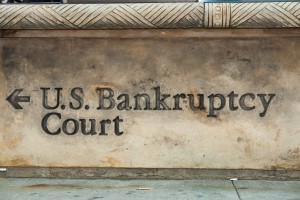By Ryan C. Wood
Howdy humans. In 2020 the State of California legislature and Governor Gavin Newsome changed the California exemptions under to California Civil Procedure Section 704. There is also the CCP 703 exemptions. Exemptions protect your assets from those you owe money to in the event the creditor seeks collection for the money you owe them. The CCP 704 exemptions are usually chose when the debtor has equity in their primary residence. The CCP 704 exemptions have large exemptions, homestead exemptions, to protect a lot of equity in a primary residence. The CCP 703 set of exemptions has a limited or lower dollar amount homestead exemption. No human can be left shirtless and penniless even if they owe money to some third-party. There are exemptions for different categories of assets such as: household goods, jewelry, vehicles, clothes, equity in primary residence and bank account money. There are more, but these are the main exemptions. The CCP 704 exemptions were changed to add a new exemption to protect bank account money for those choosing the CCP 704 exemptions.
California Civil Procedure Section 704.225
California added a great exemption to the California Civil Procedure Section 704 set of exemptions for bankruptcy lawyers to help clients discharge their debts while having enough money to continue to eat and live.
704.225 provides: “Money in a judgment debtor’s deposit account that is not otherwise exempt under this chapter is exempt to the extent necessary for the support of the judgment debtor and the spouse and dependents of the judgment debtor.”
Great, so what dollar amount is “extent necessary for the support of the judgment debtor and the spouse and dependents of the judgment debtor.” Is it $5,000 or $50,000?
When new exemptions are added there is no case law or interpretation of the new exemption initially. Can a debtor exempt $50,000 in their bank account? Can a debtor exempt only $5,000 in their bank account when seeking protection under the Bankruptcy Code?
Other exemptions share the same language as Section 704.225. “Extent necessary for the support of the judgment debtor and the spouse and dependents of the judgment debtor,” language is also used in exemptions CCP 704.100, 704.150 and 704.140.
Exemption CCP 704.100 protects certain life insurance policy claims. Exemption 704.150 protects certain wrongful death claims. Exemption 704.140 protects certain personal injury claims.
Interpretation of Extent Necessary for Support of Judgment Debtor or Bankruptcy Filer
While there currently is limited interpretation of the new 704.225 exemption there is analysis of other exemptions using this same language.
We shall start with In re MacIntyre, 74 F.3d 186, 188 (9th Cir. 1996) and also In re Spenler, 212 B.R. 625, 628 (9th Cir. BAP 1997); In re Toplitzky, 227 B.R. 300, 302 (9th Cir. BAP 1998).
Section 704.225 exemption is part of California state law, accordingly the state law burden of proof applies. See Schwartzman v. Wilshinsky, 50 Cal. App. 4th 619, 626, 57 Cal. Rptr. 2d. 790, 795 (1996); In re Davis, 323 B.R. 732, 741 (9th Cir. BAP 2005) (Klein, B.J., concurring) (burden of proof is substantive, so state law should provide the rule of decision regarding the burden on each state exemption).
California exemption statutes shall be liberally construed, for their manifest purpose is to protect income and property needed for the subsistence of the judgment debtor (bankruptcy filer). See In re Payne, 323 B.R. 723, 727 (9th Cir. BAP 2005) (citation omitted); see also Schwartzman, 50 Cal. App. 4th at 630 (California exemption statutes should be construed to benefit the judgment debtor).
When it comes down to it whether the amount exempted pursuant to CCP 704.225 is determined on a case by case basis with consideration of factors including income, employment situation and prospects, retirement status, age, life expectancy, health, certainty of future financial status, budget, ability to regenerate retirement assets, tax obligations, and dependents’ needs.
If the debtor of judgment debtor is an elderly retiree, the bankruptcy court should consider the debtor’s future financial needs and seems to imply that future financial needs will be at least as great or greater than present.
Back to Specific Dollar Amounts
Circumstances vary widely between one human and another. Expenses from rent, basic living needs, necessities versus luxury, car payments, student loans, taxes owed and many other factors will all be relevant. The bankruptcy filer has the burden of proving the amount exempted is necessary for the maintenance and support of the debtor in the future rather than the past. The analysis should place greater importance on future needs of the debtor. Again, bankruptcy has no intent of leaving humans penniless upon receiving a discharge of debts. Humans must be able to continue a seemingly normal existence and this is where problems always will arise. Bankruptcy Court’s have broad discretion to determine what is necessary or not. What is necessary for one human will be different than another human with different obligations in life. One debtor may have a dependent that is disabled, a young child, or some other human that requires special needs. This human will have higher expenses as a result and therefore be able to exempt more bank account money than the human with no dependents.
For elderly retirees most have limited income and any money they can squirrel away in a bank account. An elderly retiree with fixed income should be able to exempt more bank account money than a 30 year-old still working everyday with no future limits on ability to earn more money. Bankruptcy attorneys will need to ask detailed questions about past and future needs of the debtor specific and possibly special to their life. These types of difference or factors need to be supported by declaration and other documentary evidence. Income versus necessary monthly expenses should be balanced and evidence the likelihood of future savings will be limited therefore every penny of existing money in a bank needs to be exempted/protected.
If an elderly retiree only has $15,000 in the bank that will probably be all they really have as to liquid assets. $15,000 for most humans only represents a few months of expenses or a couple of emergencies that cannot be anticipated, and the money just needs to be available to deal with the emergency. If an objection to the claimed exemption is filed, the basis for the dollar amount exempted must be supported by declaration and documentary evidence to prove the amount is necessary for the maintenance and support of the debtor and their dependents.

